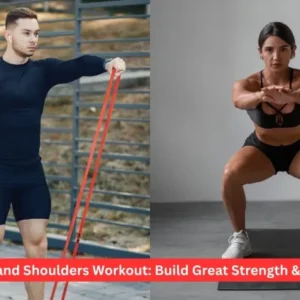When it comes to exercising the core region, most individuals tend to think about crunches, planks, or sit-ups, but a crucial component to take into consideration is usually not mentioned, which is to stretch the abs.
These are great exercises, which stretch your abdominal muscles, making them flexible, correct posture and relieve the dreaded stiff muscles developed due to walking or vigorous exercises. Be it a sportsperson, office goer, or the individual recovering from core fatigue, frequent ab stretches will result in enhanced movement, reduced backaches, as well as increased breathing capacity.
In this guide, we will learn about ab stretches, their relevance to core strength and spine health, and how to perform them effectively and safely through simple and accessible techniques.
You will also find out which stretches suit your routine most, when not to stretch and how stretches complement perfectly with core-strength exercises. Regular practice may bring changes to how your body looks and performs in and out of the gym.
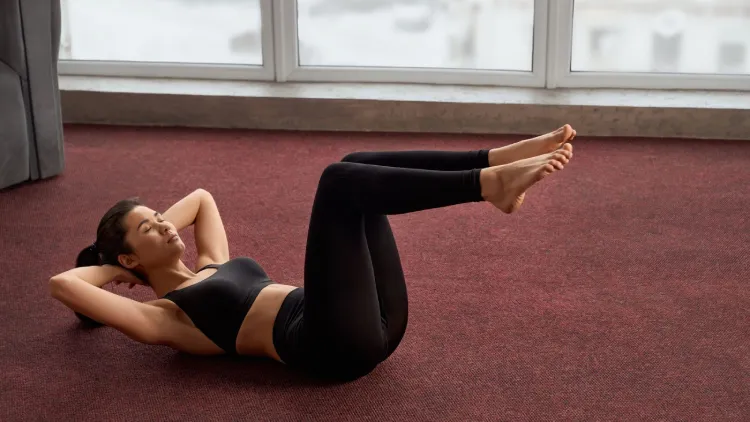
What Are Ab Stretches?
Ab stretches are exercises and poses which focus on the body parts of the abdominal region, such as the core abdominal muscles referred to as the rectus abdominis, obliques, and transverse abdominis. These muscles have a role in providing spine stability, maintaining postures, and performing acts like twisting, bending, and reaching.
Although ab exercises such as crunches shorten the abs, ab stretches do the opposite by stretching the muscles to provide balance by making them strong yet flexible. When your abs are permanently firm (either due to overtraining or through constant sitting), then you might find that your body adapts by adopting ineffective postural stability or strategies of movement. This may cause pain or even damage, and this is felt more in the lower back.
In order to avoid them, it is essential to practice ab stretches regularly, as it will make your abdominal muscles flexible and workable.
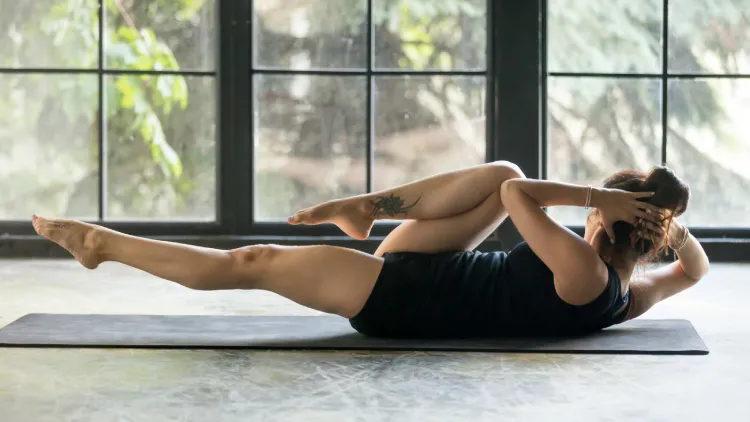
Why Are Ab Stretches Important?
Stretching your abdominal muscles might not appear as important as exercising your hamstring or shoulder muscles, but the outcomes are equally felt. Allow me to explain why not only is ab stretching useful, but it should also take some space in your fitness and wellness routine:
1. Improves Posture
In cases where your abdominal muscles are too tight, they will end up pulling your pelvis and ribcage forward, resulting in a hunched or slouching posture. Ab stretches are used to open the front of the body and lift the chest, and straighten the spine. This helps not only to make you taller and confident but also to avoid spinal compression and chronic pains of back pain.
2. Improves the Flexibility of the Core
Tightness reduces the scope of performance and exposes an individual to injuries. Elastic abdominals play a role in increased movement quality in daily work and sports pursuits. Be it stretching something above your head or twisting your torso, ab stretches boost the flexibility of your range of movements and enhance the fluidity of movements.
3. Less Back Pain
The tense abdominal wall may dip the pelvis and put pressure on the bottom of the back that may cause discomfort or pain. Ab stretches can relieve this pressure because they pivot your spine to its normal position and promote a harmonious assemblage of front and rear muscle tissues of your torso. Core stretching may prove to be an easy but effective solution for those who struggle with backaches because of bad posture or sitting too long.
4. Accelerates Healing and Lowers the Risk of Injury
After exercise, ab exercises help the muscles to heal due to the inflow of blood and precipitation of lactic acid. This helps prevent not only the soreness of muscles but also the danger of injuries, including strains or cramps. Appeasing-intensive exercises strengthen the muscles and prevent the tightness of your core.
5. Helps in Breathing
The tightness of abdominal muscles can restrict the movement of the diaphragm, which compromises your capacity to breathe deeply. Ab stretches to open the front body, which makes it easier to expand the lungs and have a more effective respiration, particularly during hard exercise or when doing cardio.
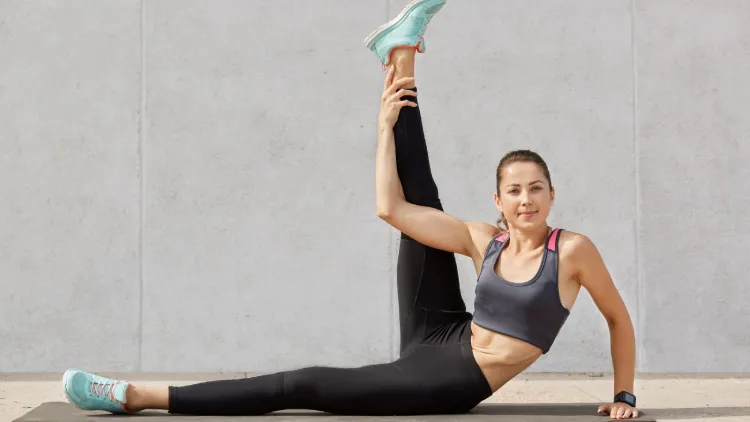
Best Ab Stretches to Include in Your Routine
Ab stretches are quite simple to incorporate into your regimen, and you do not need specialised equipment. The following are among the best stretching exercises for rest, building a strong core foundation, and improving flexibility.
1. Cobra Stretch (Prone Abdominal Stretch)
The Way to Do It:
- The posture that you are supposed to adopt is the one where you lie face down on your mat.
- Have your palms below your shoulders.
- It is pressed by your hands and you elevate your top part of your body, but the hips have to be on the ground.
- Stay in the pose between 20 and 30 seconds, breathing deeply.
Benefits: This pose targets the rectus abdominis muscle, and it is good following ab-intensive exercises. It tackles poor posture in sitting or slouching and enhances the spinal extension.
2. Backbend standing stretch
The Way to Do It:
- Stand straight with your feet shoulder-width apart.
- Put your hands on your lower back or lift your hands high.
- Gradually bend backwards, lift your chest and back and look at the ceiling.
- Wait 15-20 sec.
Advantages: It is an easy-to-use standing stretch which engages the abdominal wall and increases spinal movement. You can almost do it anywhere, and it is quite good at restoring a relatively normal posture during the day.
3. Stability Ball Stretch
The Way to Do It:
- Sit in a stability ball and lower yourself gradually onto the ball till you have your lower back supported.
- In a relaxed pose, drop your hands so that they hang over the top of the ball and stretch your back.
- Keep the pose for at least 30 seconds.
Benefits: Working with a stability ball provides an intense but tried and controlled stretch to the abs, chest and even the hip flexors. It is especially effective during the elimination of tension in the core after training.
4. Cat-Cow Stretch
How it is Done:
- Begin on the fours: place your hands on your shoulders and knees on your hips.
- As you bend your back and raise your head (cow), breathe in.
- Breathe out, stretching your back straight and belly in the spine (cat).
- Repeat the 6-8 cycles.
Advantages: This dynamic movement is a good method of stretching and moving the whole spine and abdominal musculature, which is frequently applied during yoga sessions. It also involves the core using rhythmic movement.
5. Upward-Facing Dog
How it is Done:
- Start lying down on your stomach; place your hands below your shoulders.
- Pinch your hands together and raise your chest, and also elevate your thighs to a certain degree off the surface.
- Breathe out and look straight, keeping your shoulders back.
- Breathe in, hold 20-30.
Advantages: The yoga pose stretches and strengthens the arms, besides strengthening the shoulders and the abdominal muscles. It also encourages extension of the spine and is excellent in contrast to strengthening of the abs.
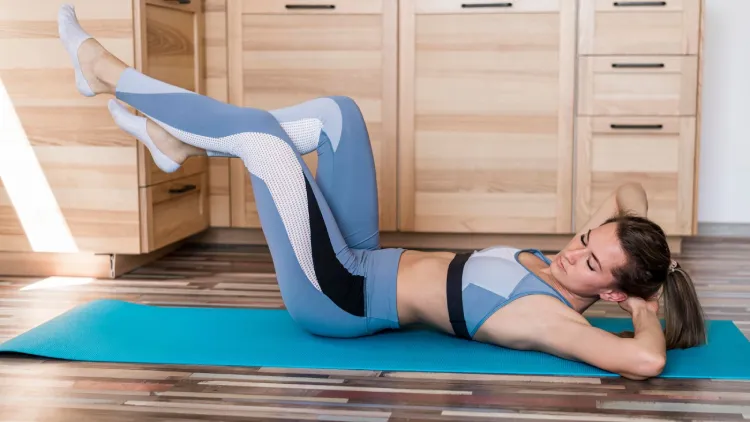
Tips for Safe and Effective Ab Stretching
To make your ab stretches as effective as possible, you need to keep in mind these safety and technique suggestions:
- Warm up: Your muscles must first be warmed up using light cardio/dynamic movements and then stretched to prevent strains.
- Breathe Deep: Deepen the stretch using slow, consistent breathing and promote relaxation. The retention of breath will cause superfluous tension.
- Do not overextend: Do not overstrain your body to the point of discomfort or pain. Go into every stretch and adapt to them slowly.
- Stretch After the Workouts: It is also recommended that ab stretches are done, particularly after ab workouts, cardio sessions or strength training exercises.
- Be Consequential: A few minutes every day, maybe 5 to 10 minutes of stretching, can result in permanent gains in flexibility, posture and core health.
When Should You Avoid Ab Stretches?
Even though ab stretches are good and safe overall, it is not appropriate to use them in some situations:
- Pregnancy: Not all abdominal stretches will be safe during pregnancy, particularly the ones that require the extension of the spine.
- Post-Surgery: You should speak with your doctor before doing any stretches, especially with any recent abdominal or spinal surgeries.
- Hernias: Individuals who experience hernias in the abdominal area are not to apply straining which intends to stress the core without the approval of a doctor.
- Severe Spinal Problems: Deep backbends can worsen already bad conditions of the spine, such as a herniated disc or scoliosis.
Listen to your body and make sure that you talk to a health professional when you have underlying medical issues.
Combining Ab Stretches with Strength Training
Individual stretching is not going to be sufficient to achieve muscle gains, yet when used in combination with core strengthening exercises, the ab stretches can be used as a means of balance maintenance and tightness prevention. There are some good strength exercises such as:
- Fore-and-side planks (side and front planks)
- Bicycle Crunches
- Hanging Leg coughing
- Russian Twists
- Mountain Climbers
Strength training should be followed by abdominal stretching to lengthen the muscles and eliminate tightness in them, and increase strength and flexibility.
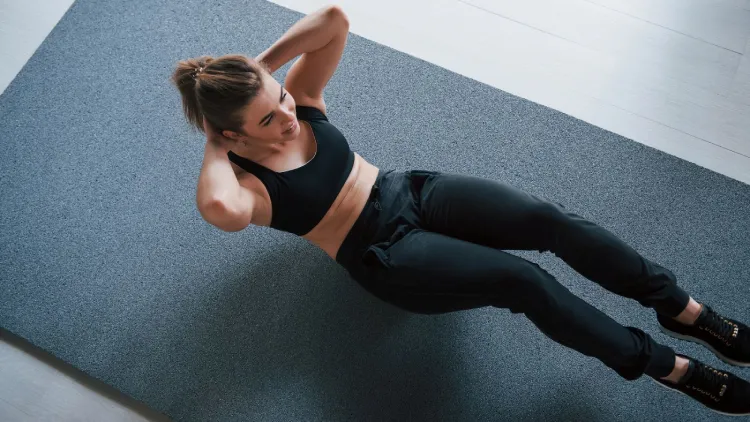
Final Thoughts
Addition of ab stretches in addition to your workout regimen might be a subtle factor, but the side effects extend far. Better posture, pain reduction, enhanced flexibility and injury prevention are only a few of the benefits that accompany the practice of abs stretching and, therefore, creating a healthier resilient body.
As you work out in the gym or sit at the desk, a couple of minutes of daily ab stretches will help improve your lifestyle. They are easy to perform, do not need any extra gadgets, and you can incorporate them within your daily routine, cool-down, or lunchtime.
Strength is not the only form of prioritising your core health; it should also be done with balance and rest, which stretching is the best form that can provide.
Frequently Asked Questions
1. When is the peak time to use ab stretches?
The ab stretches are best followed after a workout session when the muscles are already warm and ready to move. It is also possible to stretch your abs during lunch break in case you sit all day long, or immediately after you wake up, to get the stiffness from sleep. All you need to do is ensure that you do not strain by stretching cold muscles.
2. Do ab stretches get rid of belly fat?
Although ab stretches increase the flexibility process, posture, and core strength, they are not supposed to drive belly fat away directly. The amount of fat to be lost requires a combination of a healthy diet, cardiovascular exercises, and strength training. Nevertheless, the stretching can improve the muscle tone and digestion, and, thus, influence your fitness objectives in an indirect way.
3. On what basis should I stretch my abs?
To achieve the best effect, it is desirable to perform ab stretches not least 4 or 5 times a week. It is all about consistency, and only 5-10 minutes per day can enhance core flexibility, relieve tension and avoid injury. Daily stretching is extra beneficial in case you live a very active life or are prone to tightness in the core.
4. Is the ab stretch safe for a beginner?
Yes, the safe way of doing ab stretches is safe for beginners as long as you are careful of how you perform them without straining your body. Use moderate stretching atfirstst such as the Cobra Stretch or the Cat-Cow Pose, and work in increments as your body loosens up. Check with your body always and, in case of pre-existing conditions, consult a professional.



